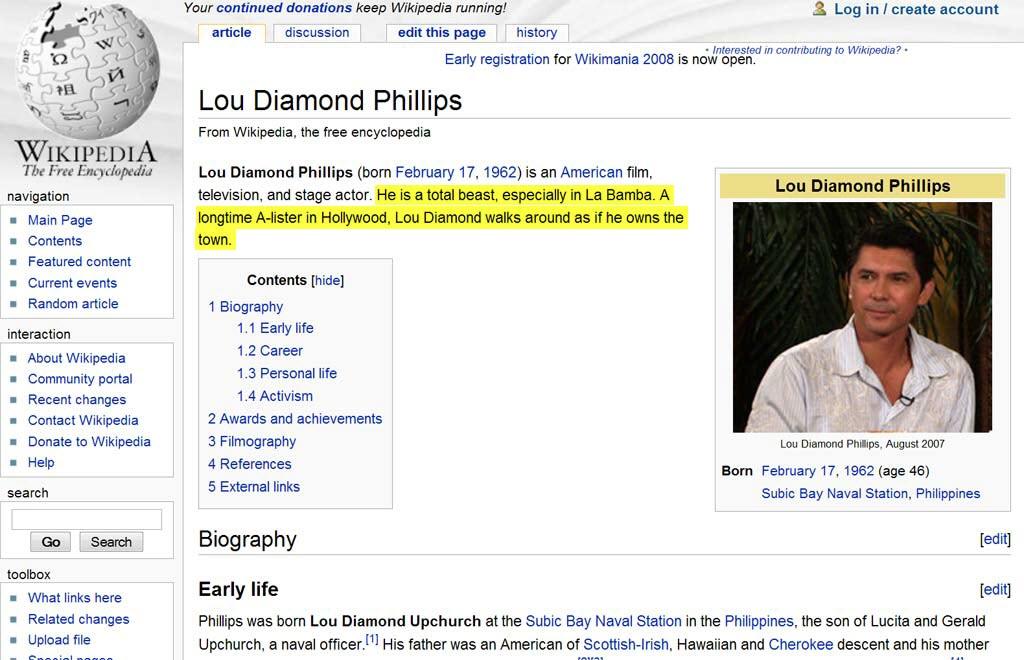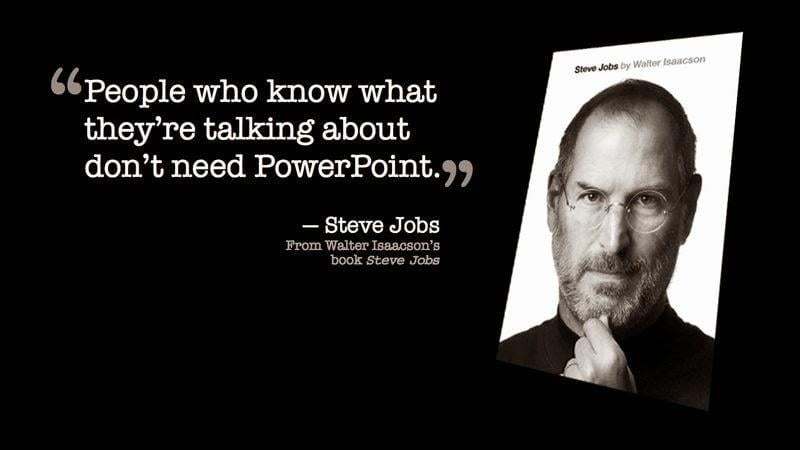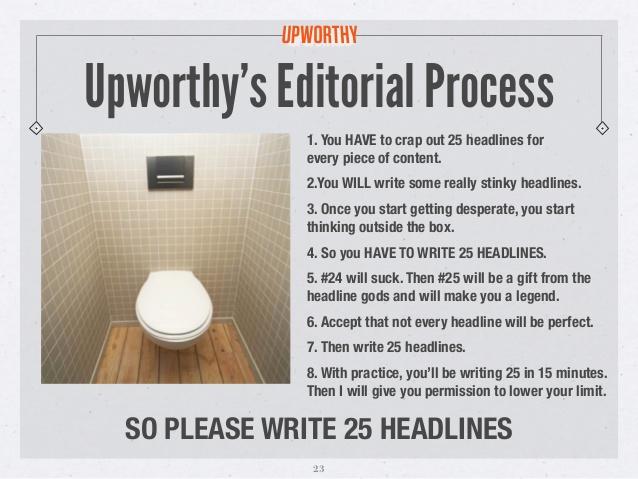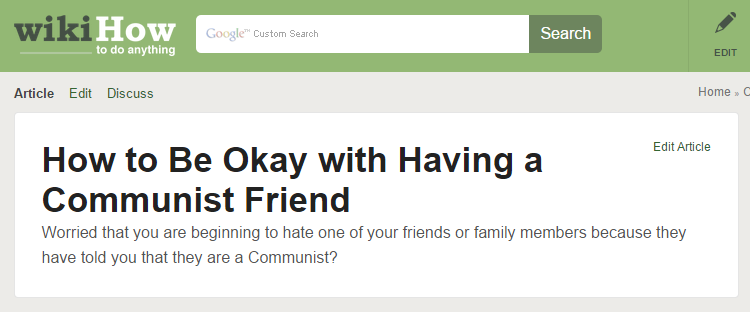Writing a blog post is a little like driving; you can study the highway code (or read articles telling you how to write a blog post) for months, but nothing can prepare you for the real thing like getting behind the wheel and hitting the open road. Or something.
Now that I’m done thoroughly mangling that vague metaphor, let’s get down to business. You know you need to start blogging to grow your business, but you don’t know how. In this post, I’ll show you how to write a great blog post in five simple steps that people will actually want to read. Ready? Let’s get started.
How to Write a Blog Post in Five Easy Steps [Summary]:
Now let’s review each step in more detail.
How to Write a Blog Post, Step 1: Planning
First, a disclaimer – the entire process of writing a blog post often takes more than a couple of hours, even if you can type eighty words per minute and your writing skills are sharp. From the seed of the blog post idea to finally hitting “Publish,” you might spend several days or maybe even a week “writing” a blog post, but it’s important to spend those vital hours planning your post and even thinking about your post (yes, thinking counts as working if you’re a blogger) before you actually write it.

Does your blog post have enough circles and crosses?
Long before you sit down to put digital pen to paper, you need to make sure you have everything you need to sit down and write. Many new bloggers overlook the planning process, and while you might be able to get away with skipping the planning stage, doing your homework will actually save you time further down the road and help you develop good blogging habits.
📗 Learn how to write better ad copy with our free guide: 10 Tricks to Get the Click
Choose a Topic That Interests YOU
There’s an old maxim that states, “No fun for the writer, no fun for the reader.” No matter what industry you’re working in, as a blogger, you should live and die by this statement.
Before you do any of the following steps, be sure to pick a topic that actually interests you. Nothing – and I mean NOTHING – will kill a blog post more effectively than a lack of enthusiasm from the writer. You can tell when a writer is bored by their subject, and it’s so cringe-worthy it’s a little embarrassing.

Don’t go there.
I can hear your objections already. “But Dan, I have to blog for a cardboard box manufacturing company.” I feel your pain, I really do. During the course of my career, I’ve written content for dozens of clients in some less-than-thrilling industries (such as financial regulatory compliance and corporate housing), but the hallmark of a professional blogger is the ability to write well about any topic, no matter how dry it may be. Blogging is a lot easier, however, if you can muster at least a little enthusiasm for the topic at hand.
You also need to be able to accept that not every post is going to get your motor running. Some posts will feel like a chore, but if you have editorial control over what you write about, then choose topics you’d want to read – even if they relate to niche industries. The more excited you can be about your topic, the more excited your readers will be when they’re reading it.
If you’re really desperate for inspiration, check out our list of eight blog topic generators to get you going, or these eight tricks to come up with unique blog ideas.
Write an Outline For Your Post
Great blog posts don’t just happen. Even the best bloggers need a rough idea to keep them on-track. This is where outlines come in.
An outline doesn’t need to be lengthy, or even detailed – it’s just a rough guide to make sure you don’t ramble on and on about something tangential to your topic.
For example, this is the outline for this post that I sent to my editor before getting to work:
Introduction
[Quick summary explaining what the blog post will cover]
Section 1 – Planning a Blog Post
– Things bloggers should do before putting pen to paper – outlining, research etc.
Section 2 – Writing a Blog Post
– Tips on how to focus on writing, productivity tips for bloggers
Section 3 – Rewriting/Editing a Blog Post
– Self-editing techniques, things to watch out for, common blogging mistakes
Section 4 – Optimizing a Blog Post
– How to optimize a blog post for on-page SEO, social shares/engagement, etc.
Section 5 – Conclusion
– Wrap-up
The purpose of this outline is to make sure I know what I plan to cover, in what order the various sections will appear, and some bare-bones details of what each section will include.
Outlines keep you honest. They stop you from indulging in poorly thought-out metaphors about driving and keep you focused on the overall structure of your post. Sometimes I’ll write a more thorough outline (and sometimes I won’t bother with one at all), but most of the time, something like the outline above is perfectly acceptable.
Whether you write your outline in your word processor, on a piece of paper, or even scribbled on a bar napkin, do whatever works for you to keep you focused.
Do Your Research
One of the biggest secrets professional bloggers (myself included) don’t want you to know is that we don’t actually know everything. Truth be told, sometimes we don’t know anything about a topic before we sit down to write about it.

Pro tip: you don’t actually need a passport to write a travel marketing post.
This doesn’t mean that all bloggers are insincere fakers. On the contrary, many bloggers’ natural curiosity is what makes them great at what they do. If you blog for a living, you have to be comfortable jumping from one topic to the next, even if you don’t know anything about it. What allows us to do this, and to write authoritatively about subject areas that are new to us, is knowing how to properly research a blog post.
It almost goes without saying, but relying solely on Wikipedia as a primary source is almost always a bad idea. Yes, Wikipedia does have thousands of excellently researched articles, but it’s not infallible, and erroneous facts do make their way into articles without site editors noticing. Plus, every verifiable fact on the site is cited from links elsewhere on the web, so why cite the middleman?

Lou Diamond Phillips was a total beast in ‘La Bamba.’
If you’re relying on third-party information to write your blog post, choose authoritative sources. Official associations, government websites, heavily cited research papers, and preeminent industry experts are all good examples. Nobody is right all the time, though, so approach every source with a the practiced skepticism of a journalist and question everything until you’re positive your information is solid.
🚨 Need some ideas? Get marketing, promotion, and content ideas for every month of the year >> The Mega Must-Have Marketing Calendar
Check Your Facts
A few years ago, I edited a piece written by a colleague focusing on the highlights of a major technology conference. The writer, under a seriously tight deadline, had done a bang-up job of writing great copy in virtually no time, but he failed to properly check his facts. He cited an article from Forbes in which the writer claimed Steve Jobs was using PowerPoint on stage – something that never happened. It was lazy journalism on the part of the Forbes writer, and an easy mistake to make on my colleague’s part, but the result was the same; one poorly researched article directly impacted another because both writers failed to do their due diligence.

All it takes to tank your credibility is one glaring error. Everyone makes mistakes, but it’s crucial to avoid gaffes like this. If you’re just starting out, your credibility and authority will take a major hit if you publish inaccurate information, and even if you have a blog with millions of loyal readers, your regulars will be all too eager to jump all over your mistake – just take a look in the comment sections of publications such as Wired or TechCrunch to see how quickly this can happen.
In the event that you fall prey to a well-executed hoax, repeat widely circulated misinformation, or simply make a mistake, own up to it right away and be transparent about your edits. If you try to slip something past your readers, you can bet that they’ll call you out on it, further compounding the damage. Be honest, be accountable, and fix it – fast.
How to Write a Blog Post, Step 2: Write a Great Headline
Everyone and their grandmother has an opinion about headlines. Some say you should be as specific as possible (to avoid misleading your readers and manage their expectations), while others recommend taking a more abstract approach. Vague headlines might work just fine if you’re Seth Godin, but for most of us, being specific is better.

Some headlines practically write themselves.
There are two main approaches you can take to writing blog post headlines. You can either decide on your final headline before you write the rest of your post (and use your headline to structure your outline), or you can write your blog post with a working title and see what fits when you’re done.
Personally, I don’t adhere to a rigid strategy one way or the other. Sometimes I’ll come up with a strong headline from the outset and stick with it, whereas other posts will take a lot more work. Although sites such as Upworthy arguably ruined internet writing with their clickbait headlines, the process behind the site’s headlines has merit, as it forces you to really think about your post and how to grab your audience’s attention.

Your approach to headlines should also vary depending on your audience. For example, let’s look at these super-specific headlines from around the web:
- How Our Side Project Generated $51,365 in 60 Days
- How Lua’s CEO Built an Enterprise Messaging App That Boosts Open Rates From 20% to 98%
- 5 Things We Did in 2014 to Grow by 1059%
The exact figures presented in these headlines are all framed within a context of providing actionable advice to other marketers and startups. “Case study” blog posts like this often perform well, due to their transparent nature (which pulls the curtain back from successful growing businesses and the people who run them) and the “how-to” angle (which attracts people who want to accomplish the same thing by following real-world examples).

People LOVE how-to articles.
That’s all well and good if that’s what you’re looking for – which, in my case, is rare. I didn’t read any of these posts, simply because it seems that at least half of the blog posts in my RSS feed are structured in this fashion (including this one). They’re great for the sake of example, but I glossed right over them because they’re so similar to the dozens of other posts I see every day telling me three hacks to grow my startup by X percent in Y months.
Another common technique is posing a question in your headline. Done well, this can be extraordinarily effective, as it is in these examples:
- Can an Algorithm Write a Better News Story Than a Human Reporter?
- Would You Be Part of a Crowdsourced Environmental Warning System?
- What Do Uber, Zenefits, and Public Health in a Kenyan Slum Have in Common?
However, this technique is also growing tiresome, and fewer publications are utilizing it these days (thankfully alongside the always-irksome “You won’t believe…” headline). If you opt for asking questions in your headlines, be sure it’s a question your audience will be genuinely interested in.
Writing headlines for blog posts is as much an art as it is a science, and probably warrants its own post, but for now, all I’d advise is experimenting with what works for your audience. If your readers want hyper-specific case studies on how to do stuff, by all means let ‘em have it. Don’t, however, do something just because someone else is, especially if it’s not resonating with your audience.
📚 Need some inspo for words to include in your headline? Free guide download >> 135 of the Best Words & Phrases for Marketing with Emotion
How to Write a Blog Post, Step 3: Draft your post
So, you’ve done your research, settled on a headline (or at least a working title), and now you’re ready to actually write a blog post. So get to it.

Be sure to actually turn your computer on before you start writing.
Similarly to headlines, there are two main approaches to writing a blog post. You can either sit down and write an entire draft in a single sitting (my preferred workflow), or you can chip away at it gradually over time. There is no right or wrong answer here – only whatever works for you.
However, I’d recommend getting as much done in one session as possible. This makes it easier to stay focused on the topic, minimizes the chance that you’ll forget crucial points, and also lets you get the damned thing out of your hair faster.
Even if you work more effectively in short bursts, try to maximize the amount of writing you get done in those sessions. The more times you have to revisit a draft, the more tempting it is to add a little here, and a little there, and before you know it, you’ve gone wildly off-topic. Get as much done as you can in a single sitting even if you prefer to draft a blog post over three or four writing sessions.
Like most skills, writing becomes easier and more natural the more you do it. When you first start, you might find that it takes a week (or longer) to write a post, but with practice, you’ll be knocking out great posts in hours. Unfortunately, there are no “hacks” or shortcuts when it comes to writing – you have to put in the time at the coalface.
NOTE: A lot of people struggle with writing introductions. A great strategy is to write the introduction last. Just get into the meat of the blog post, and worry about the introduction later. Here are five easy ways to write a great introduction.
Wondering how long a blog post should be? We’ve got you covered.
How to Write a Blog Post, Step 4: Add images effectively
Writing for the web is an entirely different animal than writing for print. Oftentimes, people simply don’t have the time, will, or ability to focus on lengthy blog posts without some visual stimulation. Even a well-formatted blog post consisting solely of text is likely to send your reader screaming back to Reddit or Twitter within minutes, which is why it’s so important to include images in your posts.
Images Help Your Blog Post Flow More Effectively
One of the most important reasons to include images in your blog posts is to break up the text. Many people scan blog posts rather than pore over every word, and interspersing images throughout the copy will make your post seem less intimidating and more visually appealing.
Images Make Great Visual Punchlines
Everyone likes a good laugh, and a well-chosen image can help lighten the tone of your posts and inject some much-needed humor into a piece. This can be particularly effective if you’re writing about a dry (or flat-out boring) topic.

This image has nothing to do with blogging.
Images Make Complex Topics More Easily Understandable
Let’s face it – sometimes, digital marketing (and hundreds of other niche topics) isn’t the most accessible subject to newcomers. That’s why images are an essential part of your blogging toolkit if you’re hoping to expand your audience. Diagrams, charts, infographics, tables, and any other visual assets can help your readers understand abstract or complex topics and grasp the points you’re trying to make.
📗 Free guide >> The 120 Best Words & Phrases for Marketing With Emotion
How to Write a Blog Post, Step 5: Edit your blog post
Actually writing a blog post is hard. Editing a blog post is harder. First and foremost, in addition to just traditional spell check, run your blog post through a grammar checker like Grammarly to fix any contextual mistakes.
But it by no means ends there. Many people mistakenly assume that editing is simply striking through sentences that don’t work or fixing grammatical errors. Although sentence structure and grammar are both very important, editing is about seeing the piece as a whole and, sometimes, being willing to sacrifice words (and the hours it took to write them) for the sake of cohesion.
So here are some self-editing tips and suggestions on how to tighten up your writing so that it packs a punch and keeps your readers scrolling.
Avoid Repetition
Few things are more jarring to read than repetition of certain words or phrases. Once you’re done with the first draft of your blog post, read through it and check for words that can be replaced to avoid repeating yourself.

Repetition – avoid it.
BONUS: Every writer has a “crutch” word or phrase. This is a word that, no matter how carefully they might try, the writer simply cannot help themselves from including in their work. Identify what your crutch word is, be vigilant, and make sure it doesn’t appear more often than it needs to.
Read Your Post Aloud to Check Flow
This is a trick that many writers learn in workshops. If a piece reads awkwardly out loud, it will probably read awkwardly in your reader’s mind. It might seem a bit weird, but force yourself to read your post aloud to check for wordy bottlenecks or contrived sentences. Find yourself struggling with the flow of a sentence? Rework it until it rolls off your tongue.
Have Someone Else Read Your Work
This is crucial for inexperienced or casual bloggers. Asking a friend or colleague to check your work isn’t an admission of weakness or a sign of failure – it’s a commitment to making your work as strong as it possibly can be.

Consider asking someone else to read your work.
Ideally, ask someone with editing experience to proof your work. Also, be sure that they understand you’re not looking for help spotting typos or grammatical errors (but if they do, great), but that you want to hear their thoughts on the flow of the piece and whether it makes sense structurally. Do your points come across well? Is your position on a contentious topic clear? Does the piece prompt the reader to think or challenge an existing belief? Is the advice you’re offering worth following? These are all questions that having another set of eyes read your work can help answer.
Keep Sentences Short and Paragraphs Shorter
Nothing will intimidate or outright anger a reader faster than huge walls of text. It’s a common mistake for inexperienced bloggers to make, and one I see far too often in a lot of online articles.
Sentences should be as short as possible. They’re easier to read, making your audience’s job easier. Shorter sentences also reduce the likelihood of going off on tangents. For example, I recently came across a sentence in an opinion piece in Wired that had no fewer than seven subordinate clauses, an editorial sin of almost unimaginable magnitude.
Paragraphs should also be short and sweet. The shorter the paragraph, the more likely your readers are to keep going. The “rules” of paragraph structure have been bent a little since web-based publishing became the norm, but try to keep individual ideas isolated to their own neat, short little paragraph.
Accept That Your Blog Post Will Never Be Perfect
There’s no such thing as a perfect post, and the sooner you come to terms with this, the better.
I’m not advocating for publishing sloppy work, nor am I saying you shouldn’t be obsessive about the details. I am saying, however, that even the best blog posts could always be better, but time is always against us. Again, unless you’re Seth Godin, you probably need to publish more than one post a month, so agonizing over every post will sap you of the desire to write and waste precious time – not to mention likely to incur the wrath of your editor or content manager.
Make every post as good as it can be, learn from the experience, then move on.
Don’t Be Afraid to Make Cuts or Adapt on the Fly
You may have forgotten, but I originally included a section in the example outline for this post that dealt with optimizing blog posts for SEO. I fully intended to write this section, but when I looked at how my first draft was shaping up, I realized this was too substantial a topic to tackle in an already lengthy post. As a result, I made the decision to cut this section from the post altogether. I purposefully left the outline intact to demonstrate that you shouldn’t be afraid to make editorial decisions like this.

Unless there’s something you absolutely MUST include (say, a section that your sales or managerial team is expecting in a post that you agreed to deliver), your outline is not carved in stone. Remember – an outline is a guide, not an immutable series of commandments. If something doesn’t work, whether it be a sentence, a paragraph, or even a whole section, don’t hesitate to make the cut. Be ruthless with your work.
That’s All She Wrote…
Blogging is one of those jobs that seems easy until you have to do it. Fortunately, it does get easier, and with time and practice, you’ll be blogging like a pro in no time. And it can be one of your best types of marketing collateral.
If there’s an aspect of writing a blog post that I didn’t cover, or you have specific questions about my process or anything generally blog-related, let me know in the comments – I’ll answer them as best I can.
Now take up thy pen, go forth, and blog like a badass.
Want more content creation tips? We’ve got you covered.







